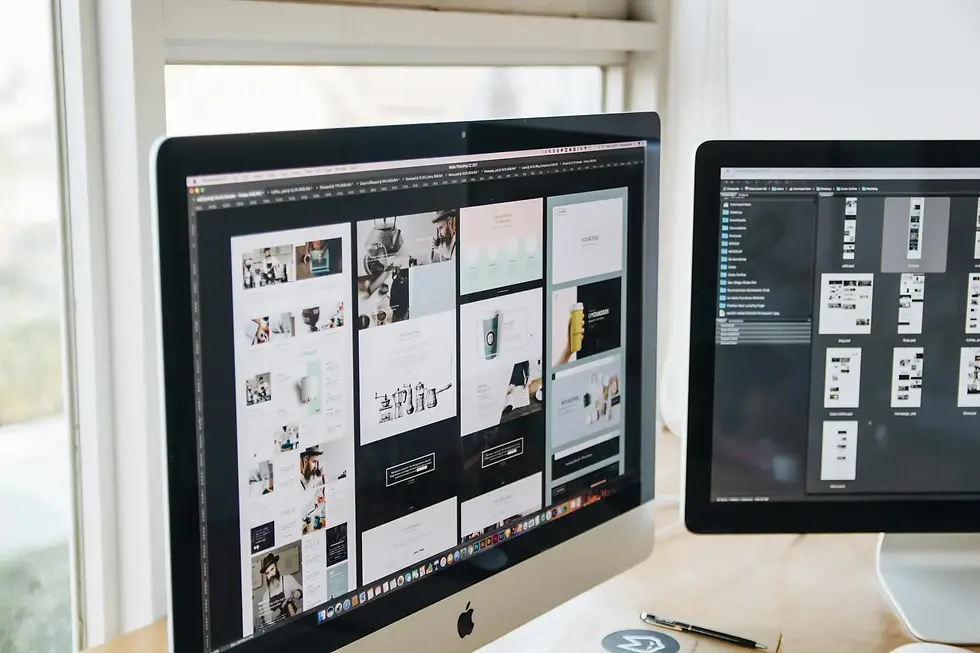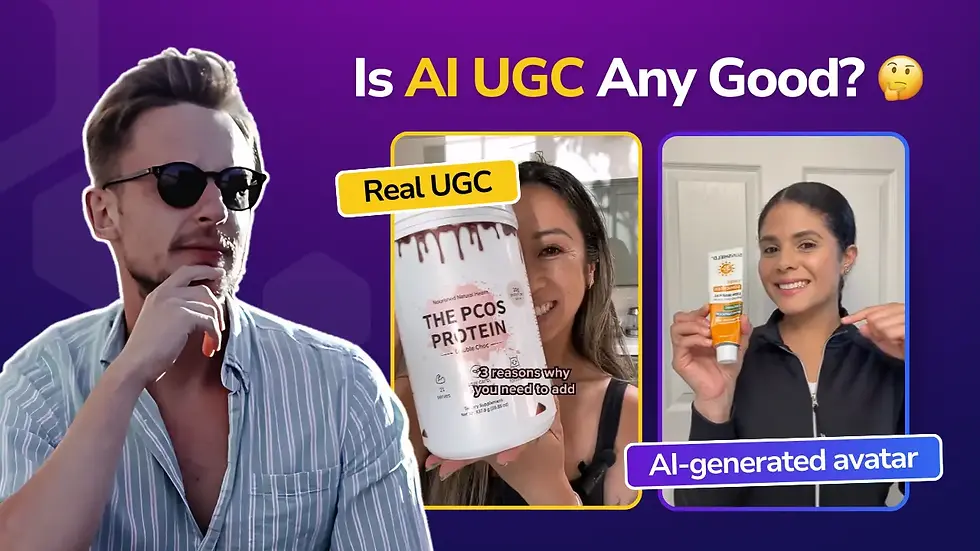What Is Ad Fatigue? 5 Best Ways to Prevent It [With AI]
- Aman H M
- Mar 19
- 4 min read
Updated: Apr 3

Ad fatigue is a marketing condition where repeated exposure of the audience to the same advertisement causes it to lose its appeal and effectiveness over time.
Your target audience can quickly become desensitized to ads that don’t change, resulting in lower engagement the more and more they are exposed to it.
Fortunately, there's a fix. Especially in these times of AI advertising, we can use AI tools to easily prevent ad fatigue.
What Is Ad Fatigue?
When your audience sees the same ad creative too many times, the ad becomes part of the background noise. It will no longer grab attention or drive action from them.
This decreased engagement can lead to measurable drops in key performance indicators such as click-through rates (CTR), conversions, and overall return on ad spend (ROAS).
In a way, even if your product or service remains relevant, the message itself fails to spark interest after a point.
At the heart of ad fatigue is the balance between repetition and novelty. While repetition is needed for building brand awareness, excessive repetition without creative variation results in viewer disengagement.
If we were to hear the same joke every day, it will eventually lose its humour, right?
In a similar sense, an ad that once resonated with its audience becomes ineffective when overexposed.
What Causes Ad Fatigue?
Ad fatigue primarily results from the overexposure of the same ad to your target audience.
So here are the key factors contributing to this overexposure:
High Frequency
Running an ad at a high frequency means your audience sees it over and over in a short span.
Yes, repetition is important, but too much exposure without variation quickly makes the ad feel redundant, causing viewers to ignore it.
Creative Stagnation
When the same images and ad copy are used continuously, there's no fresh stimulus to re-engage your audience.
They've seen the message over and over again that it blends into the feed and gets skipped by the users because they already know what you're trying to say and sell.
Limited Audience Targeting
If you continually target the same narrow audience without refreshing your parameters or exploring new segments, they will be shown the same ad more times than they need to be shown.
Algorithmic Optimisation Without Variation
Ad platforms optimise delivery based on initial performance data. When an ad performs well at the start, algorithms may boost its delivery until overexposure kicks in.
In this case, even top-performing ads can become stale over time, negatively impacting the overall campaign effectiveness.
External Market and Behavioural Factors
Beyond the campaign mechanics we have above, external factors such as market saturation, evolving consumer preferences, and competitive ad clutter can accelerate ad fatigue.
The reality is that competition is high for most brands now. In an environment where audiences are bombarded with similar messages, the likelihood of tuning out any single ad increases.
5 Ways to Prevent Ad Fatigue

Now we know ad fatigue is the combined result of high ad frequency, unvaried creative elements, repetitive targeting, and algorithm-driven overexposure—all further intensified by external market dynamics.
That means it's time to explore the different ways you can prevent it...
1. Rotate Your Ad Creatives Regularly
Instead of running the same ad repeatedly, refresh your visuals and ad copy.
Rotating your creatives has two benefits:
It keeps your messaging fresh.
It allows you to test different creatives to find more winning ads.
One of the major topics we touched on in our AI marketing article was how AI makes content creation faster and easier.
You can easily use AI UGC tools like MakeUGC to create endless UGC videos with AI creators. It's cheap and fast.
Create a script with ChatGPT, ask it to give you multiple variations of it by changing the hook, body, or CTA, and plug it into MakeUGC. You'll get a complete video ready to go live.
This is what we do in our agency for many brands out there. With us, a few extra steps are involved, like human supervision and editing for maximum impact.
The general idea is to create ads with variations so you can find that winning factor to build up on.
2. Implement Frequency Caps
The frequency cap feature in your ads manager lets you set a limit on how many times an individual user sees your ad.
It prevents overexposure and helps ensure that your audience doesn’t become desensitized.
This feature is available on major advertising channels like Meta, TikTok, and Google.
3. Refresh Your Audience Targeting
Updating your target segments can help mitigate ad fatigue.
Explore new audience segments or use lookalike audiences to ensure your ads are reaching fresh eyes, reducing the chance of overexposure within the same group. This strategy also prevents your core audience from being bombarded with the same message repeatedly.
4. Monitor Key Performance Metrics
Regularly track metrics like click-through rates (CTR), engagement levels, conversion rates, and frequency.
Early detection of a decline in these indicators can signal the onset of ad fatigue, allowing you to take corrective action before performance suffers significantly.
5. Dynamic Ads
Dynamic ads allow you to automatically assemble and deploy ads based on user behaviour.
This works well for retargeting audiences who have somehow engaged with your previous ads. They'll be shown items they browsed before or ad creatives that are most suitable to their interests and behaviour.
Need a Complete AI-Integrated Marketing Solution?
We're undeniably in the AI era. Whether you like it or not, your competitors are already using AI in their workflow, which makes their marketing output faster and cheaper.
To stay relevant and sustainable with your business, you need to adapt.
Easily master AI marketing with our 7-day AI Marketing Toolkit. In this value-packed guide, you get:
The 14 top AI tools to make your marketing workflow faster, cheaper, and automated.
An easy implementation plan to seamlessly integrate AI into your workflow.
A 7-day guide to become a master at AI marketing.
The 7-day AI Marketing Toolkit is best for brands who want to have complete control over their marketing processes. Check it out now!











